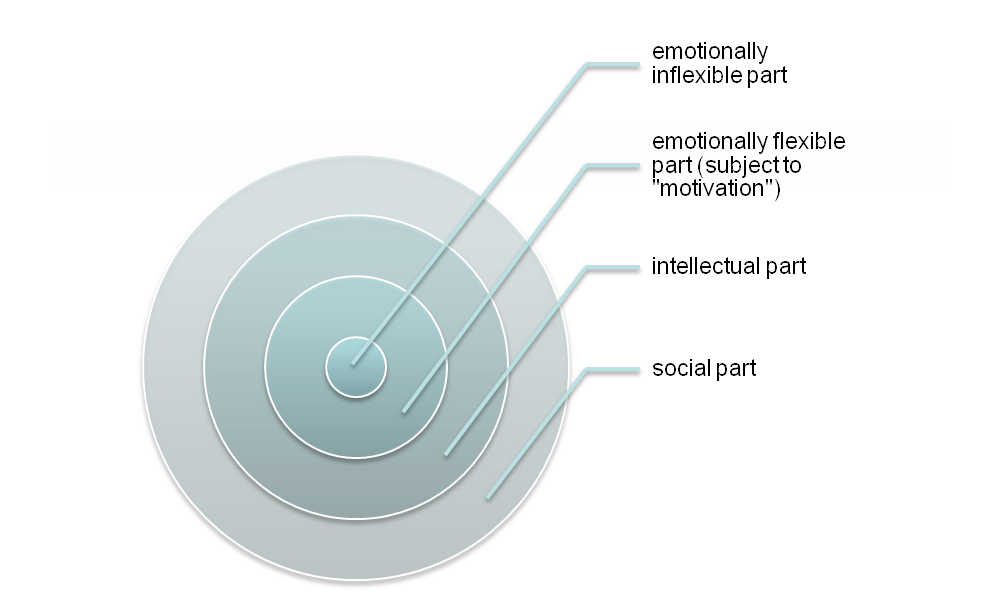our methods
From Anamnesis to Evaluation – Our 5 Steps to Finding EI Solutions
Extending the classic change approach of Lewin (1951) we have set up a five step process aiming at an optimal adaption in the face of problems with EP references. Our proposed five steps for finding an evolutionarily informed solution are:
1. Analyzing and understanding the situational context:
a) the interests of the parties involved
b) the timeframe
c) the options
d) the quality requirements
2. Learning about the state of the individuals involved,
a) socially
b) intellectually
c) motivationally
d) emotionally
3. Making an informed decision about what to adapt:
a) the environment
b) one’s own behavior or
c) one’s own attitude in order to solve the problem
4. The solution must be executed responsibly regarding
a) sustainability
b) autonomy and
c) prosociality
5. The outcome has to be evaluated with regard to
a) quantity
b) quality
c) timing
d) social effects
 We refer to an “onion skin” model of the state of the decision making individual(s), inspired by Erez & Gati (2004). We assume an individual to be only relatively self-conscious or reflective: We assume that – like our brains, whose different structures evolved over the course of different time periods, we consist of various layers with different levels of self-consciousness. From inside to outside, we find in the inner core of the individual a relatively inflexible emotional part with a deep connectedness to the body. This part will hardly be modulated by the intellectual insights and orders of the individual. Thus, it represents the ultimate boundary for the freedom of choice and behavior of the individual: Our basic needs. Second, we will find an emotionally flexible part, which can be modulated and intellectually reflected on by the individual. As long as the innermost, emotionally unswayable part does not conflict with it, this second layer can be used to move the individual as it consciously wishes to. Third, we find an intellectual layer of planning, thinking and reflecting that serves as the operational control center of the individual. Although this control center cannot reach down to the emotional core, it can normally build upon it and use it as a working platform to exploit the secondary emotional layer to achieve its goals. Finally, there is a social layer which is limiting these intellectual goals from being pursued without social “checks and balances”.
We refer to an “onion skin” model of the state of the decision making individual(s), inspired by Erez & Gati (2004). We assume an individual to be only relatively self-conscious or reflective: We assume that – like our brains, whose different structures evolved over the course of different time periods, we consist of various layers with different levels of self-consciousness. From inside to outside, we find in the inner core of the individual a relatively inflexible emotional part with a deep connectedness to the body. This part will hardly be modulated by the intellectual insights and orders of the individual. Thus, it represents the ultimate boundary for the freedom of choice and behavior of the individual: Our basic needs. Second, we will find an emotionally flexible part, which can be modulated and intellectually reflected on by the individual. As long as the innermost, emotionally unswayable part does not conflict with it, this second layer can be used to move the individual as it consciously wishes to. Third, we find an intellectual layer of planning, thinking and reflecting that serves as the operational control center of the individual. Although this control center cannot reach down to the emotional core, it can normally build upon it and use it as a working platform to exploit the secondary emotional layer to achieve its goals. Finally, there is a social layer which is limiting these intellectual goals from being pursued without social “checks and balances”.
